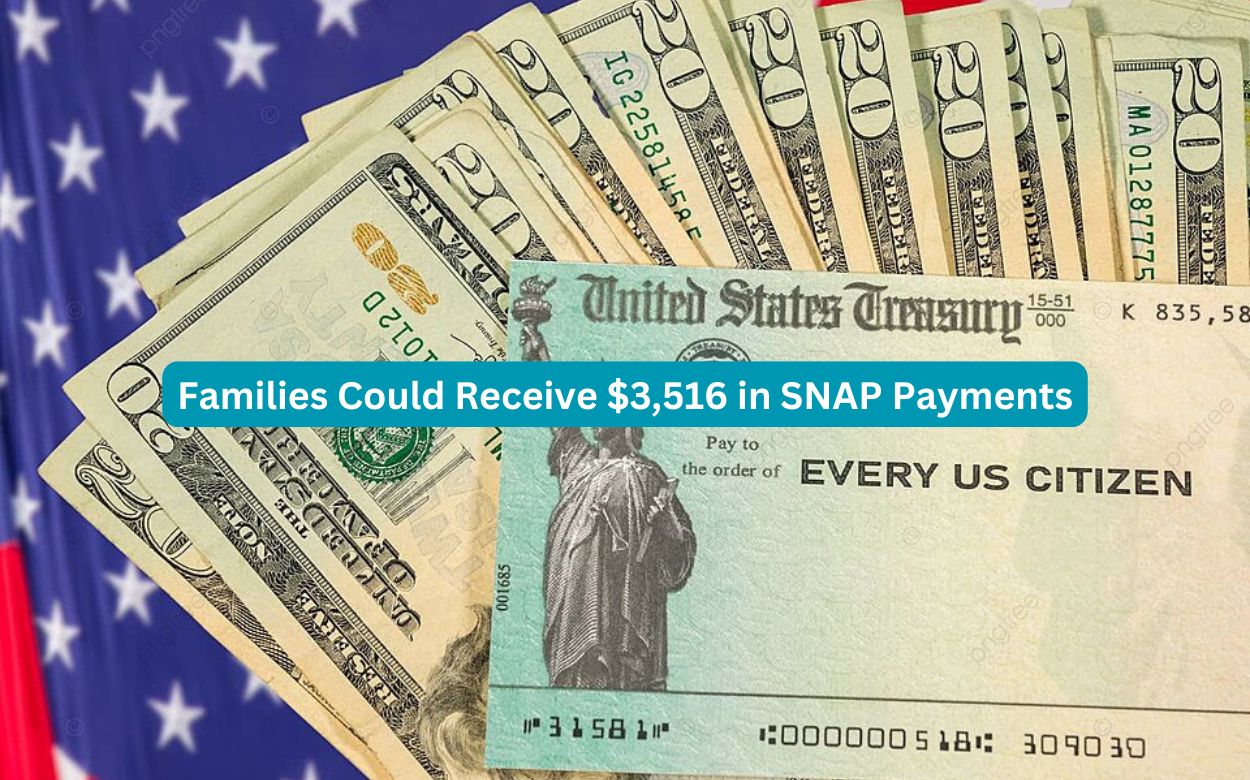Families Could Receive $3,516 in SNAP Payments: Check Which States Are Included
In an era of rising food prices and economic instability, many families in the United States rely on the Supplemental Nutrition Assistance Program (SNAP) to put food on the table. This aid is increasing dramatically for others, with qualifying families receiving monthly payments of up to $3,516. But how do these higher SNAP payments work? Which states are involved, and who is eligible for the most assistance? In this tutorial, we’ll go over the specifics of these improved benefits, answer your questions, and walk you through the process of applying for this vital help.

Mastering SNAP: What is it, and how does it work?
The Supplemental Nutrition Assistance Program (SNAP), originally known as Food Stamps, is a government program that assists low-income people and families purchase nutritional foods. Benefits are provided via an Electronic Benefit Transfer (EBT) card, which functions similarly to a debit card and is used to buy groceries at participating retailers. SNAP reduces food insecurity by giving financial assistance to those in need, ensuring that families have access to nutritious food selections despite budgetary constraints. Various criteria, including household size, income level, and state requirements, determine the quantity of aid a family receives.
Why are some families receiving $3,516?
For bigger households, the maximum monthly SNAP benefit is $3,516. This amount is only for homes with ten or more people. However, the real benefit depends on factors such as:
- Household size: Larger households often receive more advantages.
- Income level: Lower-income households are eligible for more significant benefits.
- State-specific rules: Benefit levels and supplementary assistance programs vary by state.
SNAP payments are calculated based on the Thrifty Food Plan, a nationwide guideline that determines the minimal cost of a healthy meal. The family’s income and permitted costs are deducted from this baseline.
States Offer Increased SNAP Payments in 2024:
While the federal government establishes the regulations for SNAP, individual states can change benefit amounts to meet local needs and crises. Many states have implemented new programs to increase SNAP payments in response to economic hardship, particularly during and after the COVID-19 epidemic.
- California: In California, the CalFresh program, which provides SNAP benefits, has traditionally offered emergency allotments, particularly during times of crisis, such as the COVID-19 epidemic and natural catastrophes.
- New York has also increased SNAP payments due to catastrophes, such as severe weather disasters and economic difficulties. New York’s Emergency Allotment Program temporarily increased SNAP benefits, allowing families needing assistance to receive larger-than-usual payments to meet their food costs.
- Michigan: Michigan has boosted SNAP payments for families with children under six. According to income and state requirements, families with more significant family sizes may be eligible for up to $1,200 per month.
- Texas: Texas, which routinely struggles with natural catastrophes like hurricanes, has provided emergency SNAP benefits to help needy families. These emergency benefits increase monthly SNAP payments for qualified households.
- Georgia: Georgia also provided more excellent food assistance during the pandemic, and several programs continue to provide increased payments to those experiencing financial difficulties. These temporary increases might significantly increase the amount of monthly aid.
Step-by-Step Guide: Applying for $3,516 in SNAP Payments:
If you’re not sure if you’re eligible for SNAP benefits or how to apply, here’s a quick start:
- Before applying, check your state’s online eligibility tool to determine your household’s eligibility for SNAP assistance. Make sure your household fits the income and size criteria.
- Most states have an online application procedure, which is the quickest option. You can also apply by mail or with a completed application form at a local social services office. To find the relevant forms, go to your state’s SNAP website.
- Be prepared to present papers proving your eligibility. These may include proof of identification, income, and housing expenditures.
- Most states need an interview, which can be conducted by phone or in person. The interview verifies the correct information and helps calculate the appropriate benefit amount.
- Once your application is filed and the interview is finished, you should get a decision within 30 days. If accepted, you will get your EBT card and receive monthly benefits.


Comments are closed, but trackbacks and pingbacks are open.